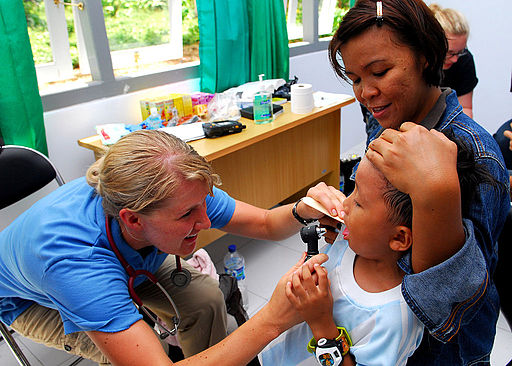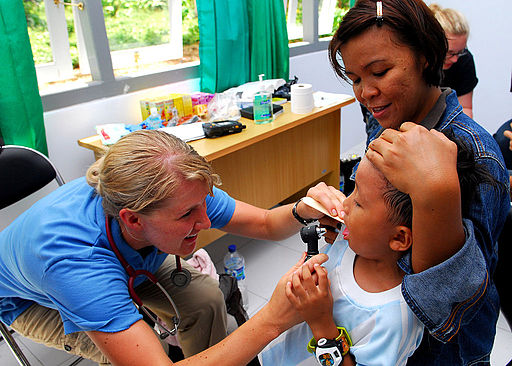Workers’ Comp Hub Newsletter: Fall 2015

This fall we look at gender discrimination in the workers’ comp system and highlight the struggles that women injured or made ill on the job face in accessing medical coverage and income support. We also bring you news on how opt-out laws are affecting workers, how cost shifting hurts workers and the public, and on the delay in renewing benefits for 9/11 first responders.
– Jim Ellenberger
Workers’ comp’s bias against women

The failed effort to pass AB 305 is bringing to light the gender discrimination in workers’ comp decisions suffered by women and transgender people who experience job-related injuries and illnesses. Activists and lawmakers who supported the bill have pointed to sexist practices throughout the medical evaluation process that reduce benefits by treating pregnancy, menopause, and osteoporosis as contributing causes of injury or illness, even when there is no evidence to do so.
AB 305 aimed to combat gendered assessments in the workers’ comp system and would have required state-appointed doctors to rate breast cancer, which overwhelmingly affects women, the same way they rate prostate cancer, which affects men. Although it was vetoed in October by California Governor Jerry Brown under pressure from employers and insurance lobbies, the bill’s supporters have catalyzed an important conversation about gender inequities in comp systems.
In industries where workers are exposed to toxic chemicals, women face additional risks to reproductive health. Birth defects, miscarriages, and breast cancer have been widely documented in women working with certain chemicals, including nail salon workers and farm workers. While proving work-relatedness in virtually all occupational illness cases is already notoriously hard, the barriers facing female workers are raised even higher and the claims women receive are reduced because of workers’ comp’s discriminatory treatment of gender-specific conditions like pregnancy and menopause as pre-existing conditions.
Other widespread gender disparities also leave women more vulnerable in the workers’ comp system. Because women tend to take on the bulk of child-rearing and domestic tasks, they are more likely to take part-time, temporary, and contract jobs, which often leave workers unprotected by workers’ comp and with less access to other benefits such as health insurance and paid sick leave. Meanwhile, discrimination and gender-based violence in the workplace lead to greater rates of stress-related and psychological illnesses in women. Moreover, because women are paid less than men in the workforce and workers’ comp systems base income payments on workers’ former salaries, the wage gap translates to lower benefits for women.
For many women, these issues are compounded by race and immigration status. Domestic workers, who are largely women of color, are entirely excluded by law from the workers’ comp systems in many states. Meanwhile, female immigrant workers are concentrated in high-risk jobs such as manufacturing and nail salons, but few have the security to report injuries or file comp claims due to threats of deportation and inadequate access to information and legal support in their own language about their rights.
Women who work in the heavily female caretaking and hospitality sectors are at a particularly high risk of injuries. Workers in nursing, home health care, cleaning, child care and other industries face a high risk for back injuries and other strains due to heavy lifting and chronic use. And because these sectors pay relatively low wages and are largely staffed by women of color, poor and working class women and women of color are disproportionately affected by these denials. What’s more, much of the caretaking work done by women happens outside the bounds of formal employment, leaving women with no workers’ comp or other employment-related benefits and protections whatsoever.
Despite the many challenges facing women who are injured on the job, workers have won important victories this year to help secure greater protections for women in high-risk industries. The Massachusetts Domestic Worker Coalition celebrated an important victory in July as their state become the fourth in the nation to pass a Domestic Workers’ Bill of Rights, which includes the right to collect workers’ compensation for employees who work over 16 hours a week. And in New York, organizers won protections for nail salon workers in a law passed this summer, which aims to prevent misclassification and increase workers’ access to information about toxic exposure.
Analysis finds Texas and Oklahoma opt outs hurt workers
Reporters at ProPublica and NPR have analyzed nearly 120 employer-designed workers’ comp plans from Oklahoma and Texas companies that have “opted out” of the state workers’ comp system. Their report shows that nearly all employer-designed policies have more restrictions and fewer benefits than state programs, with little to no independent oversight. Many companies that have opted out have designed workers’ comp plans that purposely exclude conditions for which their workers are most at risk. Most company-designed plans cut off benefits after only two years, and pay no permanent disability compensation. Moreover, injured and ill workers are almost entirely at the mercy of the company, which controls which doctors workers are sent to, how often they’re examined, and even the legal process for appeals and settlements. A coalition of large corporations is pushing to get opt-out laws passed in as many as a dozen more states within the next 10 years, a plan that would catastrophic curtail workers’ rights and protections.
Workers’ comp tragically shuts out people with occupational diseases
The Center for Public Integrity has released an important new investigative report on how the denial of workers’ comp to people with occupational diseases shifts costs onto workers and their families. While occupational illnesses kill nine times more workers than on-the-job injuries, claims for job-related sickness are far more likely to be denied, and the things are only getting worse. Over the past 25 years, states have made it harder than ever for people to get workers’ comp for illnesses. At least 11 states have limits that prevent workers from filing a claim more than a few years after their last occupational exposure to toxic chemicals. In contrast, many of the most serious and common occupational diseases have 10-30 year latency periods, meaning that affected workers won’t see their first symptoms until years after the deadline has passed to file for workers’ comp. These restrictions, combined with an adversarial system in workers must prove, against an ever-higher burden of proof, that their illness was caused by their work, places an unreasonable burden on ill workers and fails to deliver adequate or timely health care coverage and income support.
Attack on workers’ comp shifts costs of injuries from employers and insurers to the public
A new study from the Center for Economic and Policy Research estimates that cuts to workers’ comp programs account for over one-fifth of the sharp rise in the proportion of workers who receive Social Security Disability Insurance (SSDI) awards. As states have made it harder for workers to get workers’ comp, an increasing number of injured and ill workers are turning to SSDI to meet their needs. This essentially shifts costs off of employers and private insurance companies onto federal government programs funded by taxpayers. The consequences of this cost shifting are substantial: current projections indicate that before the end of 2016, the SSDI trust fund will be too depleted to pay full benefits, triggering automatic benefit reductions for people who rely on the program.
9/11 first responders wait in limbo
Despite months of rallies and visits to government officials to ensure the extension of the 9/11 Health and Compensation Act, Congress has let the bill expire. The health program, known as the “James Zadroga Act”, has provided essential medical coverage for thousands of First Responders who sustained injuries and illnesses during rescue efforts on 9/11. After being exposed to toxins at Ground Zero, many workers are now being diagnosed with cancer and other illnesses with long latency periods. While most observers expect the bill to be renewed during the next legislative session, the lapse has caused anxiety for those who are fighting tough, ongoing battles with disease and rely on the health program for treatment.
Reports
Opt-out plans leave workers unprotected
NPR and ProPublica published a joint investigative report showing how employer-designed workers’ comp plans violate workers’ human rights and leave them unprotected from workplace injuries and illnesses.
Shifting costs threaten disability insurance
A report from The Center for Economic and Policy Research reveals that cuts to workers’ comp have led more injured and ill workers to turn to Social Security Disability Insurance, shifting costs from employers and insurers to the public.
Poultry workers exploited
Oxfam has released a report and an interactive website exposing the inhumane conditions, unlivable wages, and heightened risk for injury and illness that poultry workers face.
Toxic risks
In a series of investigative reports released this summer, The Center for Public Integrity examines toxic exposure in the workplace and the cost workers and their families pay when regulations fail to provide adequate protections.
Why deadly chemicals are still on shelves
In These Times has published a report investigating how the chemical industry’s political influence has led to deadly delays in chemical regulation.
Reviewing workers’ comp
The National Academy of Social Insurance has published the latest version of its comprehensive workers’ comp report, presenting data on benefits, coverage, and costs through 2013.
Under-reporting injuries
A New Hampshire study analyzes under-reporting of workplace injuries and cost-shifting that places up to half the burden of medical bills and lost wages on Medicare, private insurance, and workers themselves.
Rights at risk in app economy
The National Employment Law Project has released a report calling for the protection of workers’ rights in the rapidly growing “on demand” economy.
Health & Safety in review
Celeste Monforton and Kim Krisberg published a report reviewing the year in occupational health & safety, covering local and national action, major media coverage, and new research.
